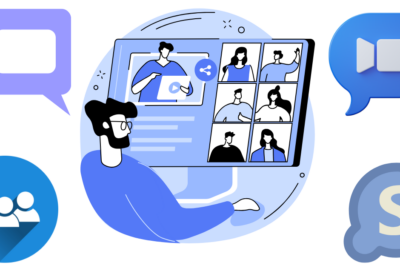What is Interactive AI and How it’s Shaping Our Future
Are you ready to embark on an exciting exploration of one of the most captivating advancements in technology? In this blog, we’ll break down the complexities of Interactive AI. We’ll unravel the wonders and explore how it’s revolutionizing healthcare, education, customer service, entertainment, and more.
Along with its incredible potential come ethical considerations, privacy concerns, and questions about its impact on the workforce. We’ll dive into these challenges head-on, discussing the importance of responsible AI deployment and the need to address these issues as we embrace the future of technology.
If you are eager to learn about the latest innovations or curious about how they shape our world, this is for you. Get ready to embark on a fascinating journey, where the future is now, and the possibilities are limitless. Let’s dive in!
Understanding Interactive AI
Interactive AI encompasses a broad spectrum of technologies that enable machines to understand, interpret, and respond to human language and behavior in real-time. These systems can simulate conversations, provide recommendations, assist with tasks, and adapt to user preferences over time.
The systems exhibit characteristics such as adaptability, context awareness, and responsiveness. They continuously learn from user interactions, improving their accuracy and effectiveness over time. Additionally, they can handle ambiguity and understand nuanced language cues, making interactions more natural and intuitive.
Applications of Interactive AI
Here are the diverse applications across various industries:
Healthcare
In healthcare, AI assists with patient diagnosis, personalized treatment recommendations, and virtual consultations. They can analyze medical records, symptoms, and genetic data to provide insights and support clinical decision-making.
Education
Interactive AI enhances learning experiences by offering personalized tutoring, adaptive learning platforms, and interactive educational content. These systems can assess students’ progress, identify areas for improvement, and deliver tailored instruction to meet individual needs.
Customer Service
It powers virtual assistants and chatbots that handle customer inquiries, resolve issues, and streamline support processes. By automating routine tasks and providing instant responses, businesses can improve customer satisfaction and operational efficiency.
Virtual Assistants
Virtual assistants like Siri, Alexa, and Google Assistant utilize interactive AI to understand voice commands, answer questions, and perform tasks such as setting reminders, checking the weather, and controlling smart home devices.
Smart Homes
Interactive AI enables smart home devices to learn user preferences and automate household tasks. From adjusting thermostats to managing lighting and security systems, these technologies enhance comfort, convenience, and energy efficiency.
Gaming
In the gaming industry, AI powers non-player characters (NPCs) that exhibit lifelike behavior, react to player actions, and contribute to immersive gameplay experiences. These systems can generate dynamic storylines, adapt game difficulty, and personalize challenges based on player skill and preferences.
Advantages of Interactive AI
It offers several benefits, including:
Efficiency
By automating repetitive tasks and streamlining interactions, interactive AI saves time and reduces human effort. It enables faster decision-making, enhances productivity, and optimizes resource allocation in various domains.
Personalization
Interactive AI personalizes experiences by analyzing user data, preferences, and behavior patterns. Whether recommending products, content, or services, these systems deliver tailored solutions that cater to individual needs and preferences.
Accessibility
Interactive AI improves accessibility for individuals with disabilities by providing alternative means of communication and interaction. Voice-based interfaces, text-to-speech technology, and gesture recognition enable users with diverse abilities to access and interact with digital resources.
Challenges and Limitations of Interactive AI
Despite its potential, it faces several challenges and limitations, including:
Data Privacy
It relies on vast amounts of user data to operate effectively, raising concerns about data privacy and security. Unauthorized access, data breaches, and misuse of personal information pose significant risks and require robust safeguards and regulations.
Bias and Fairness
AI algorithms may exhibit biases based on the data they are trained on, leading to unfair or discriminatory outcomes. Addressing bias and ensuring fairness in the systems is essential to promote inclusivity and prevent harmful consequences.
Dependency
As reliance on interactive AI grows, there is a risk of over-reliance and loss of critical thinking skills. Users may become overly dependent on AI-driven recommendations and solutions, undermining autonomy and creativity.
Future Trends of Interactive AI
Looking ahead, several trends are shaping the future including:
Enhanced Human-Machine Interaction
Advances in natural language understanding, emotional intelligence, and multimodal interfaces will enable more intuitive and engaging interactions between humans and AI. Virtual assistants and chatbots will become increasingly adept at understanding context, emotions, and user intent, enhancing communication and collaboration.
Integration with Other Technologies
It will be integrated with emerging technologies such as augmented reality (AR), virtual reality (VR), and the Internet of Things (IoT) to create immersive, context-aware experiences. From virtual assistants in AR glasses to smart environments that adapt to user preferences, these synergies will redefine how we interact with technology in our daily lives.
Conclusion
In conclusion, Interactive AI stands as a beacon of innovation, offering boundless opportunities to transform our world. From personalized healthcare solutions to immersive educational experiences, the impact of Interactive AI is profound and far-reaching. However, as we embrace this technology, it’s crucial to navigate the ethical considerations and privacy concerns with care, ensuring that we harness its power responsibly. As we continue to witness the evolution of Interactive AI, one thing remains clear: the future is bright, and the possibilities are limitless. Let’s embark on this journey with curiosity, mindfulness, and a commitment to shaping a better tomorrow.
FAQs
Is interactive AI the same as traditional AI? No, it focuses on enabling natural, human-like interactions between humans and machines, whereas traditional AI often operates based on predefined rules or algorithms.
How is interactive AI used in healthcare? It assists with patient diagnosis, personalized treatment recommendations, and virtual consultations, improving access to care and clinical outcomes.
What are some examples of interactive AI in daily life? Virtual assistants, smart home devices, and interactive gaming experiences are common examples of their applications in everyday life.
What challenges does interactive AI face? It faces challenges related to data privacy, bias, and dependency, which require careful consideration and mitigation strategies.
What are the future trends of interactive AI? Future trends include enhanced human-machine interaction, greater emphasis on ethical considerations, and integration with other emerging technologies to create immersive, context-aware experiences.




